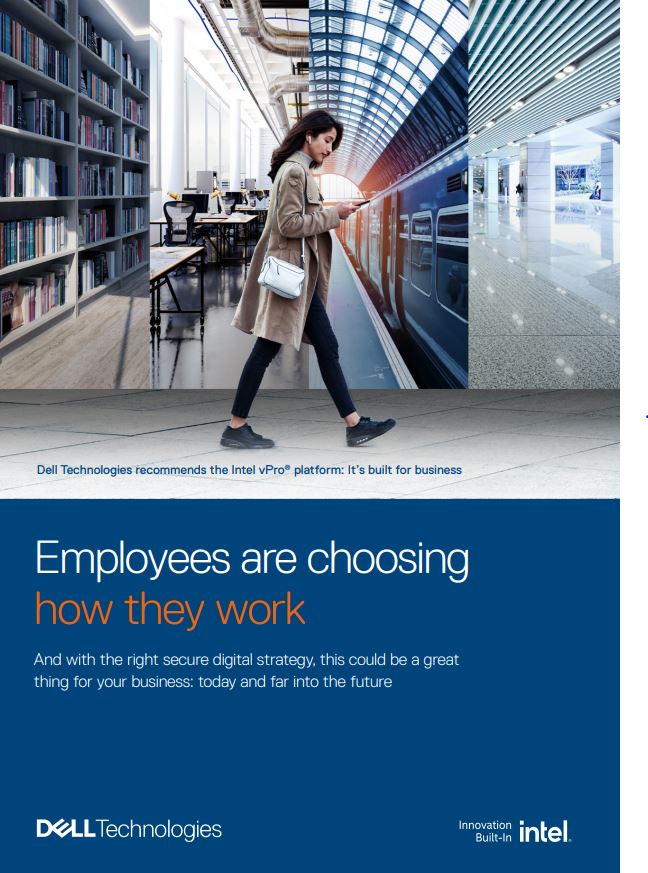Building a more supportive environment for LGBTQ+ staff
Tech workers feel solidarity is starting to erode, and the workplace may be to blame


This article originally appeared in issue 33 of IT Pro 20/20, available here. To sign up to receive each new issue in your inbox, click here
With diversity becoming more of a priority for many tech businesses, it’s easy to fall into the trap of putting on a show rather than putting in the hard yards. It’s common to see businesses fly a rainbow flag during Pride Month, but how much support do these organisations give to their LGBTQ+ staff during the other 11 months of the year?
Whatever your gender or sexual orientation, everyone should have the right to be their authentic selves at work. Yet, for many in the LGBTQ+ community that sadly doesn’t feel possible. The software company Bryq highlighted as much last year, with research finding 21% of European LGBTQ+ employees were discriminated against in the workplace.
Diversity has always been a problem area for the UK tech sector. According to Tech Nation, just 19% of the workforce is currently female, and data relating to LGBTQ+ employees is much harder to come by – suggesting a lack of attention. There are several measures all organisations can take, however, to make their workplace more inclusive of LGBTQ+ staff. Should they succeed, it can lead to a host of meaningful benefits.
Opening up tech to the LGBTQ+ community
One way to make the industry more appealing to untapped LGBTQ+ talent is ensuring your workplace is a supportive environment. This, chiefly, means ensuring staff who identify as LGBTQ+ feel comfortable, and that there are systems in place to stamp out discrimination.
Creating such an environment isn’t just the right thing to do, it’s also good for business. When employees feel comfortable and safe, retention and productivity rise. Organisations will also gain access to a wider talent pool with different viewpoints and experiences, which feeds directly into the creation of more robust and non-biased products and tools.
“Somewhere between 5-10% of people identify as LGBTQIA+, and happy employees stay in jobs longer,” says Serenity Westfield, senior data architect at Welcome Break. “It seems an obvious move to support this community. You’re either missing out on great potential staff or paying to recruit someone who’ll just leave.”
Get the ITPro daily newsletter
Sign up today and you will receive a free copy of our Future Focus 2025 report - the leading guidance on AI, cybersecurity and other IT challenges as per 700+ senior executives
Supportive, for Westfield, means that everyone is free to openly be themselves. “If your gay staff aren’t comfortable talking about their partners, that’s not a good sign,” she adds. “Same, if you have more than 200 employees and – as far as you know – none of them are trans or non-binary. There probably are some, they just don’t feel comfortable coming out.”
This may subsequently point to systemic issues that need to be resolved, such as allowing people to indicate within HR software when they don’t fit into the gender binary, or making sure people can use toilets that align with their identity.
Minor changes can make a major impact
Training, changing recruitment processes and implementing new policies – or modifying existing ones – to better support LGBTQ+ employees are just some of the ways organisations can be more supportive.
“Review your policies with an LGBTQ+ lens,” advises Stephen Frost, author and CEO of Included, a diversity and inclusion (D&I) consultancy. “Simple, but impactful, actions can include parental or adoption leave that accommodates same-sex couples, or medical cover that includes trans healthcare.”
RELATED RESOURCE

Employees are choosing how they work
And with the right secure digital strategy, this could be a great thing for your business: today and far into the future
What some consider ‘little things’ can mean a huge deal to others. For example, Brian Rountree, senior engineering director at Glovo, was impressed when his company included his husband in discussions during their relocation to Spain.
“Fundamentally, they recognised I was about to make a life-altering decision about moving my family halfway around the world,” he says. “[They] made themselves available to both me and my husband to answer questions, help with logistics and ease the process. Treating my family like any other considering such a big life change was very much appreciated.”
Even dress codes can make a difference, as Runa van Rijn, a data annotation manager at AutoFill Technologies, can attest. “Since the beginning, my employer made it clear the dress code had little importance in the company culture,” van Rijn tells IT Pro. “This is so important not only for trans people, like myself, but all queer and gender nonconforming people. They just accept you as you are.”
What does 'support' really mean?
Although no single business can ever truly sit back and say they’ve finally tackled D&I, there’s been an encouraging rise in the level and variety of support given to LGBTQ+ staff in the tech industry.
Indeed, both Westfield and Chloe Gilbert, a Microsoft 365 consultant at Jisc, were pleasantly surprised by the level of support given when they came out.
“When I first came out, the HR person at my then-employer had the mindset of ‘what do you need from us?’,” reveals Westfield, who was IT operations manager at the time. “I personally think this is the best way to handle the situation, as it centres on the person rather than the company. I was the first openly trans person there, so I wrote an announcement and FAQ for them to distribute, which they did while I took a week off to prepare.
Gilbert also received tremendous support from her workplace, even though she wasn’t permanent when she came out as transgender in 2014. “I was a contractor, so Jisc didn’t have to do anything to support me, but they did all kinds of things such as arrange and pay for employee workshops with the Gender Identity Research and Education Society (GIRES). Just two years into my transition I was invited to the organisation’s women’s away day for International Women’s Day (IWD), which felt so supportive.”
Some, however, feel this solidarity has eroded over recent years – particularly for trans women. Gilbert says anti-trans sentiment has grown in the UK, and she’s felt its impact, with stony reception, inappropriate impressions of her during meetings, and misgendering. This, she says, is why education, policies and training are key.
Involving LGBTQ+ staff is crucial
Companies that actively involve LGBTQ+ staff are the most successful at nurturing a safe and supportive workplace for these employees. With this in mind, network groups are becoming more common, where people can share experiences and build relationships in a safe environment. This can also double up as a listening group audience, so organisations can better understand how to support them.
Grayce, a talent management consultancy, created a Pride workstream as part of its EveryOneEmpowered initiative. This group meets fortnightly to provide an open forum for LGBTQ+ employees and allies to discuss key topics, network and plan company events.
“The team took advantage of Pride Month to help organise a range of activities that allowed Grayce’s community to come together and speak openly about what Pride meant to them and open up about their LGBTQ+ experiences in the workplace,” says Gemma Collins, Grayce’s strategic HR director. “Several policies and organisational changes have taken place off our initiative, such as updating policies around gender-neutral language, including menopause, maternity and paternity, and we’ve now got gender-neutral toilets in both our hubs. We’ve updated our email signatures and LinkedIn profile to include the use of pronouns, and we’re also considering a transition at work policy.”
Ensuring all line managers have appropriate D&I leadership skills is also key to ensuring a more direct, one-to-one support option says Priya Radia, author and D&I management consultant. Many firms have already started to integrate inclusive leadership competencies into their broader competency frameworks, she adds. Gilbert, meanwhile, reiterates training is important, but mustn’t descend into ‘box-ticking’. It should be part of the training all staff do regularly, with specific training on being an LGBTQ+ ally part of these programmes.
Another way you can make a difference is through allyship, adds Frost, which includes openly taking a visible stance to support the LGBTQ+ community as well as offering other employees the resources to do the same. Van Rijn agrees, saying their current employer has made efforts to make fellow staff feel comfortable by organising things for Pride and giving them an opportunity to share some LGBTQ+ history with the wider team. Rainbow washing, however, remains a danger Both van Rijn and Radia agree that celebrating Pride Month is an important step, but employers should ensure that’s backed up with substance.
Keri Allan is a freelancer with 20 years of experience writing about technology and has written for publications including the Guardian, the Sunday Times, CIO, E&T and Arabian Computer News. She specialises in areas including the cloud, IoT, AI, machine learning and digital transformation.
-
 Should AI PCs be part of your next hardware refresh?
Should AI PCs be part of your next hardware refresh?AI PCs are fast becoming a business staple and a surefire way to future-proof your business
By Bobby Hellard Published
-
 Westcon-Comstor and Vectra AI launch brace of new channel initiatives
Westcon-Comstor and Vectra AI launch brace of new channel initiativesNews Westcon-Comstor and Vectra AI have announced the launch of two new channel growth initiatives focused on the managed security service provider (MSSP) space and AWS Marketplace.
By Daniel Todd Published